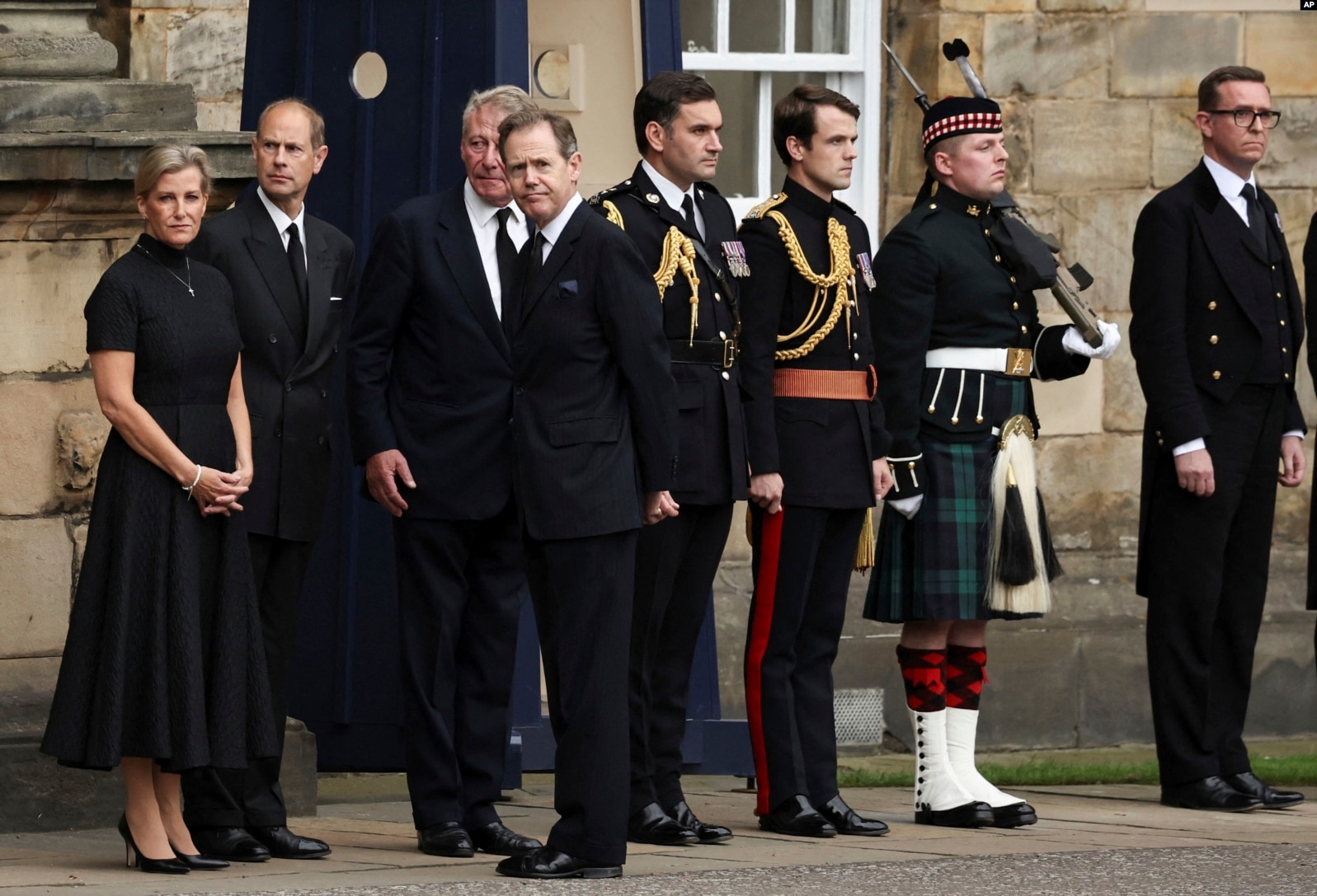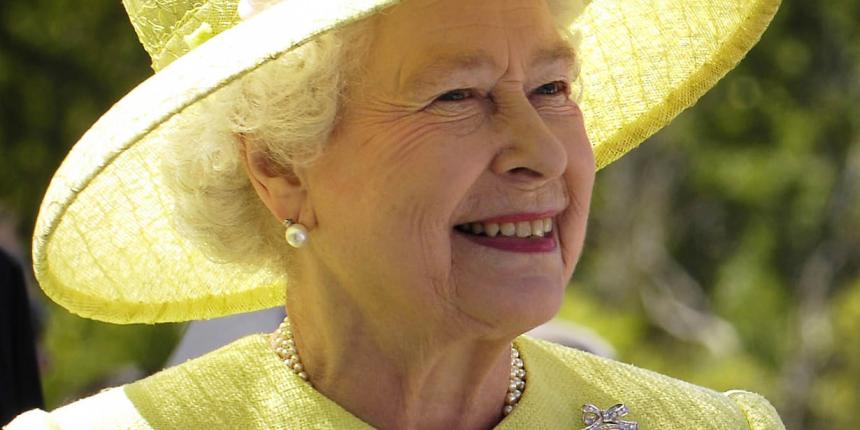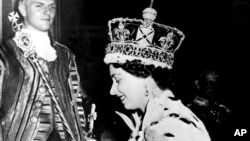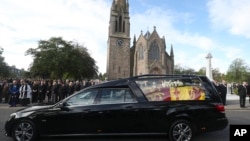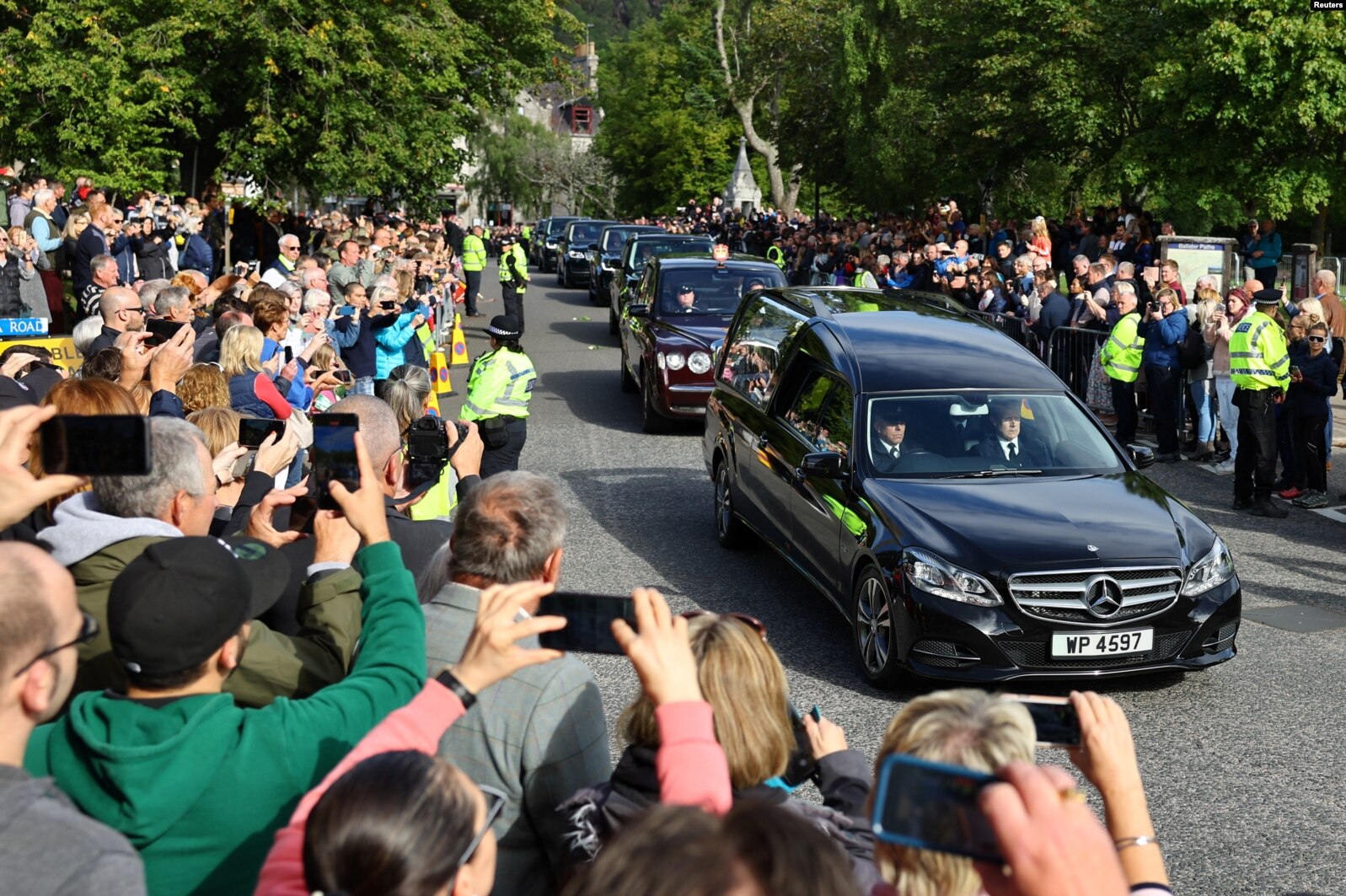
Britain’s Queen Elizabeth II has died at the age of 96 at her Balmoral residence in Scotland. She was Britain’s longest-serving monarch and this year celebrated 70 years on the throne.
Elizabeth was the only monarch most living Britons have ever known: a symbol of her nation, its empire and its Commonwealth.

Early life
Her teenage years were overshadowed by World War II, which she and her sister largely spent in the relative safety of Windsor Castle, west of London.
She personified British strength and character long before she even knew she would be queen.
In 1947, on her 21st birthday — then seen as the beginning of adulthood — she gave a now-famous televised address on her first official overseas tour in South Africa. “I declare before you all that my whole life, whether it be long or short, shall be devoted to your service and to the service of our great imperial family to which we all belong,” she said.
That same year she married the Greek-born Prince Philip. He was a distant cousin, the son of Prince Andrew of Greece and the great-great-grandson of Britain’s Queen Victoria.
Coronation
In February 1952, Princess Elizabeth and her husband were in Kenya when news broke of the death of her father, King George XI. She returned to London as Queen Elizabeth II. Her coronation, at the age of 27, took place in Westminster Abbey on June 2, 1953.
She saw a thorough transformation of society and technology during her reign of more than seven decades, a time in which she warned about the dangers of throwing away ageless ideals while embracing the advantages of new inventions. She sent out her first tweet in 2014.
Record-breaking
There are few royal records she did not break: she was Britain’s most traveled, oldest, longest-reigning monarch.
“As head of the Commonwealth, the queen has links with the past. Sometimes it’s a past that’s difficult to come to terms with because you think of empire, you think of colonial exploitation for example,” royal author and broadcaster Richard Fitzwilliams told VOA. “But so far as the queen is concerned, you think of her dedication to the organization.”
As head of state, Queen Elizabeth II represented Britain in friendships with those who held in common the British values of freedom, equality and democracy — and with dignity she faced those who did not. She traveled to more than 100 countries and met countless prime ministers, presidents, kings and queens — hosting many of them in lavish state visits to London.
State visits
Among the dozens of world leaders to visit Buckingham Palace during her reign were Ethiopian Emperor Haile Salassie; French President Charles de Gaulle; Emperor Hirohito of Japan; President Nelson Mandela of South Africa; President Robert Mugabe of Zimbabwe; Russian President Vladimir Putin; U.S. Presidents George Bush, Barack Obama and Donald Trump; and Xi Jinping of China.
The queen was not immune to criticism in her own country. Some targeted her as a symbol of an institution out of step with a postmodern, neo-liberal and democratic world – and a burden on the British taxpayer.
Diana
The death of the popular Princess Diana in 1997 was an opportunity for critics who accused her of being coldly slow to react. When she did address the nation, it was heartfelt. “What I say to you now, as your queen and as a grandmother, I say from my heart. First, I want to pay tribute to Diana myself. She was an exceptional and gifted human being,” Elizabeth said.
The marriage of her grandson Prince William to Kate Middleton in 2011 brought youthful glamour to the ancient institution.
When Prince Harry married American actor Meghan Markle seven years later, Queen Elizabeth II was at the head of a family that appeared to be moving with the times: popular, diverse and global.

Family troubles
But there were painful times ahead. Her second son, Prince Andrew, was investigated for links to convicted child sex offender Jeffrey Epstein.
Harry and Meghan fell out with the royal family amid accusations of racism.
The passing of Elizabeth’s husband, Prince Philip, in 2021 left an enduring image: a queen mourning alone — as the coronavirus pandemic swept across her nation.
In June 2022, Britain celebrated the Queen’s Platinum Jubilee, marking her 70th year on the throne.
On Sept. 6, just two days before her death, she appointed Liz Truss the 15th prime minister of her reign. It would be her last major public duty.

Legacy
Queen Elizabeth remains a giant in the history of one of the planet’s most influential nations; a bridge between Britain’s colonial past and its future as a global player in a world vastly different from the one in which she was born.
Visiting Germany in 2015, addressing President Joachim Gauck, she spoke of the vast changes she had witnessed. “In our lives, Mr. President, we have seen the worst but also the best of our continent. We have witnessed how quickly things can change for the better, but we know that we must work hard to maintain the benefits of the post-war world,” she said.
Elizabeth will be remembered for her dedication, says royal biographer Matthew Dennison. “I think the importance of the length of her reign is simply that throughout that period she went on doggedly doing the job to the very best of her ability with total conviction — and I think with love,” Dennison told Reuters.
Britain’s royal tradition, of which Elizabeth was a steward, is now in the hands of her heirs, as her first son, King Charles III, ascends the throne. The Britain they inherit is a drastically different one in terms of demographics, culture and economics.
In a globalized, pluralistic world, their job of projecting an image of greatness is no less complicated.
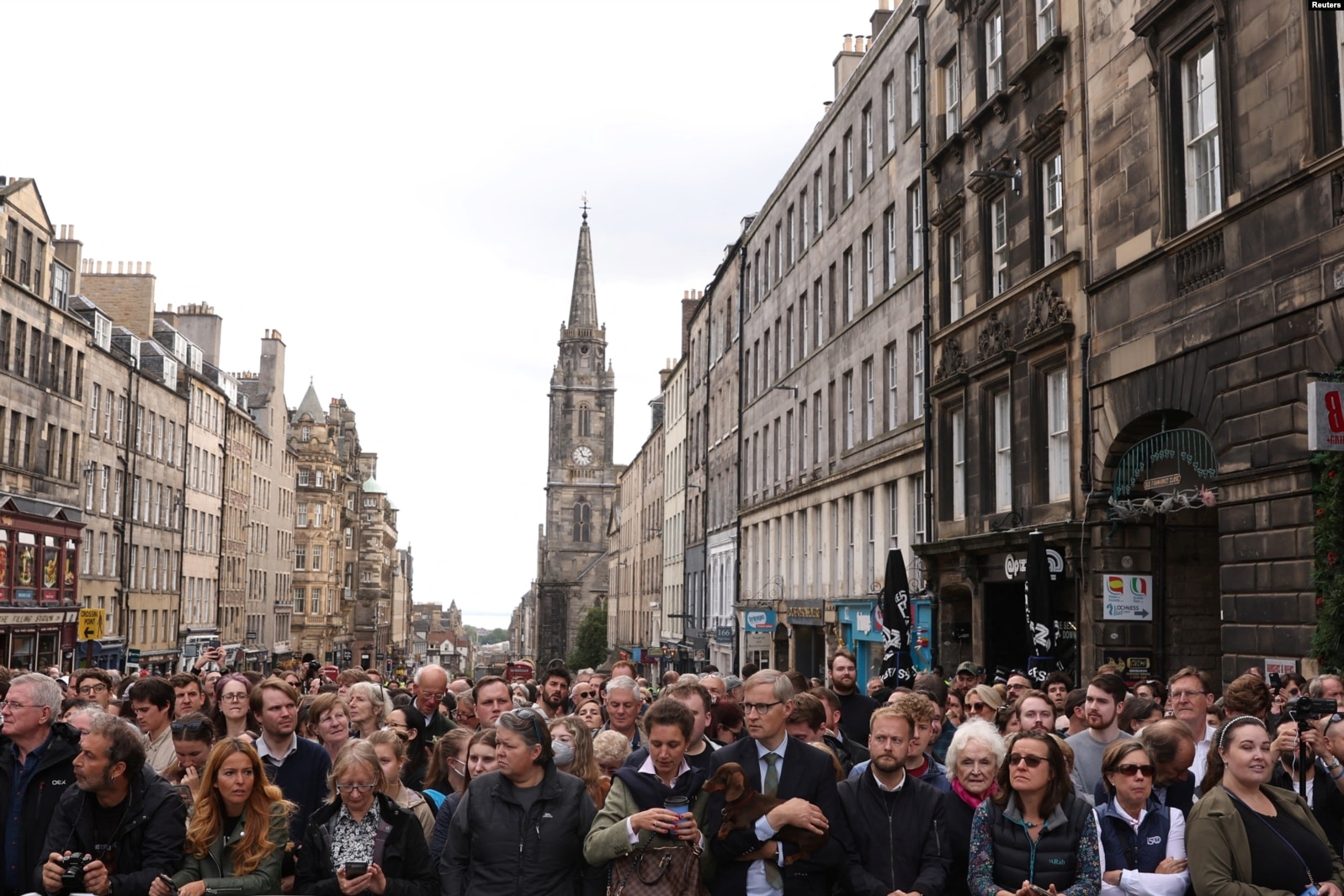
The body of Britain’s Queen Elizabeth II has been taken from Balmoral Castle in Scotland, where she died Thursday, to Edinburgh. Over the coming days, members of the public will have the opportunity to visit the coffin and pay their respects to Elizabeth, who held the British throne for seven decades.
The hearse, accompanied by royal officials and security personnel, left Balmoral Castle shortly before midday Sunday, the beginning of Elizabeth’s long and final journey to lay in peace.
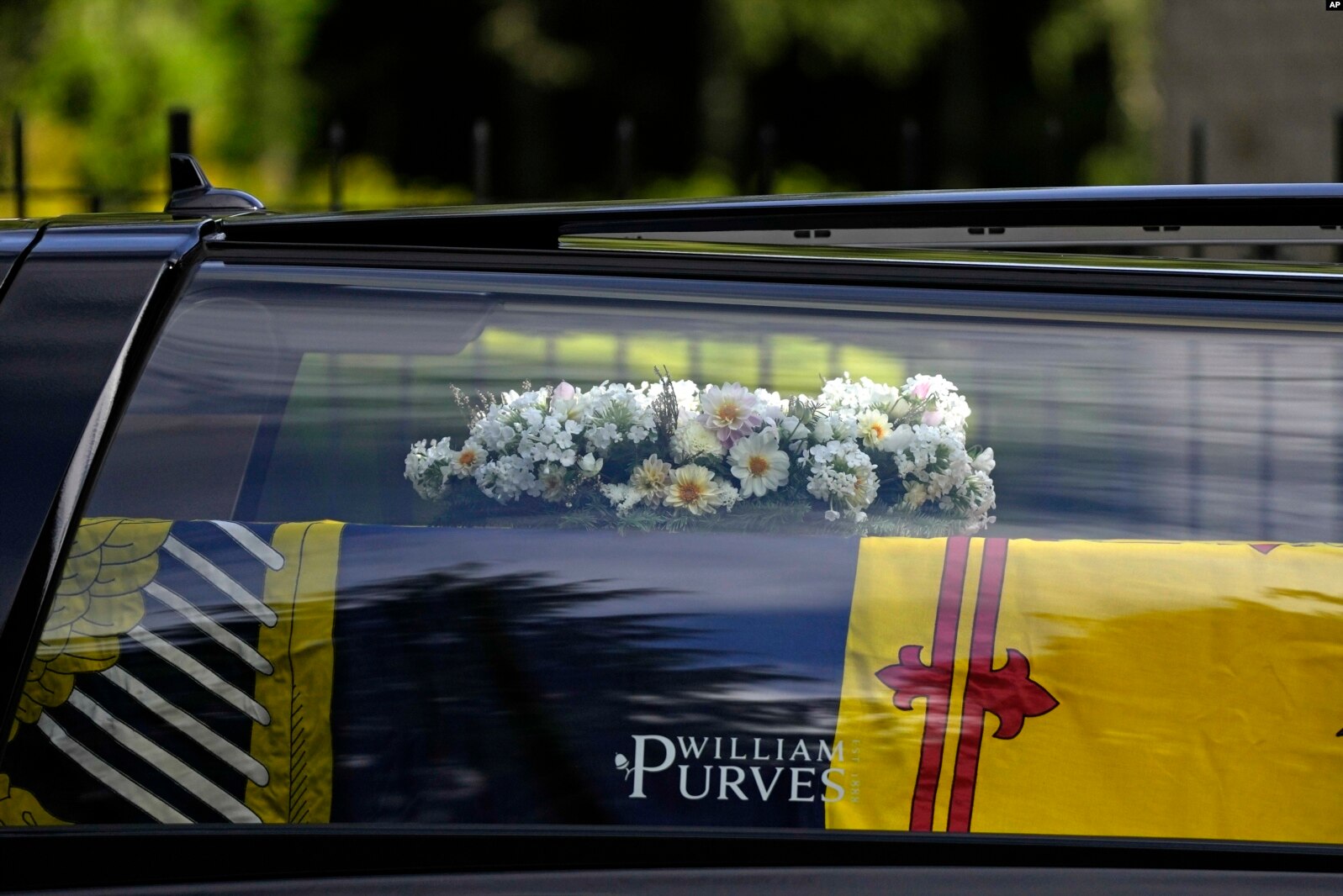
Balmoral
The convoy tracked slowly through the majestic Scottish hills, a landscape treasured by the late monarch, where she spent her final peaceful weeks of life. In years past, the queen was frequently seen visiting these remote Scottish villages when she resided at Balmoral Castle, an area she loved – and she was well loved in return.
Residents gathered on the roadside to glimpse her for the last time and to say goodbye. The silence spoke of the shock that is still felt at her passing – and the respect in which the late queen was held in communities across Britain.
Some onlookers threw flowers as the hearse passed by; many in the crowd shed tears. Gentle ripples of applause followed as the convoy continued southward.
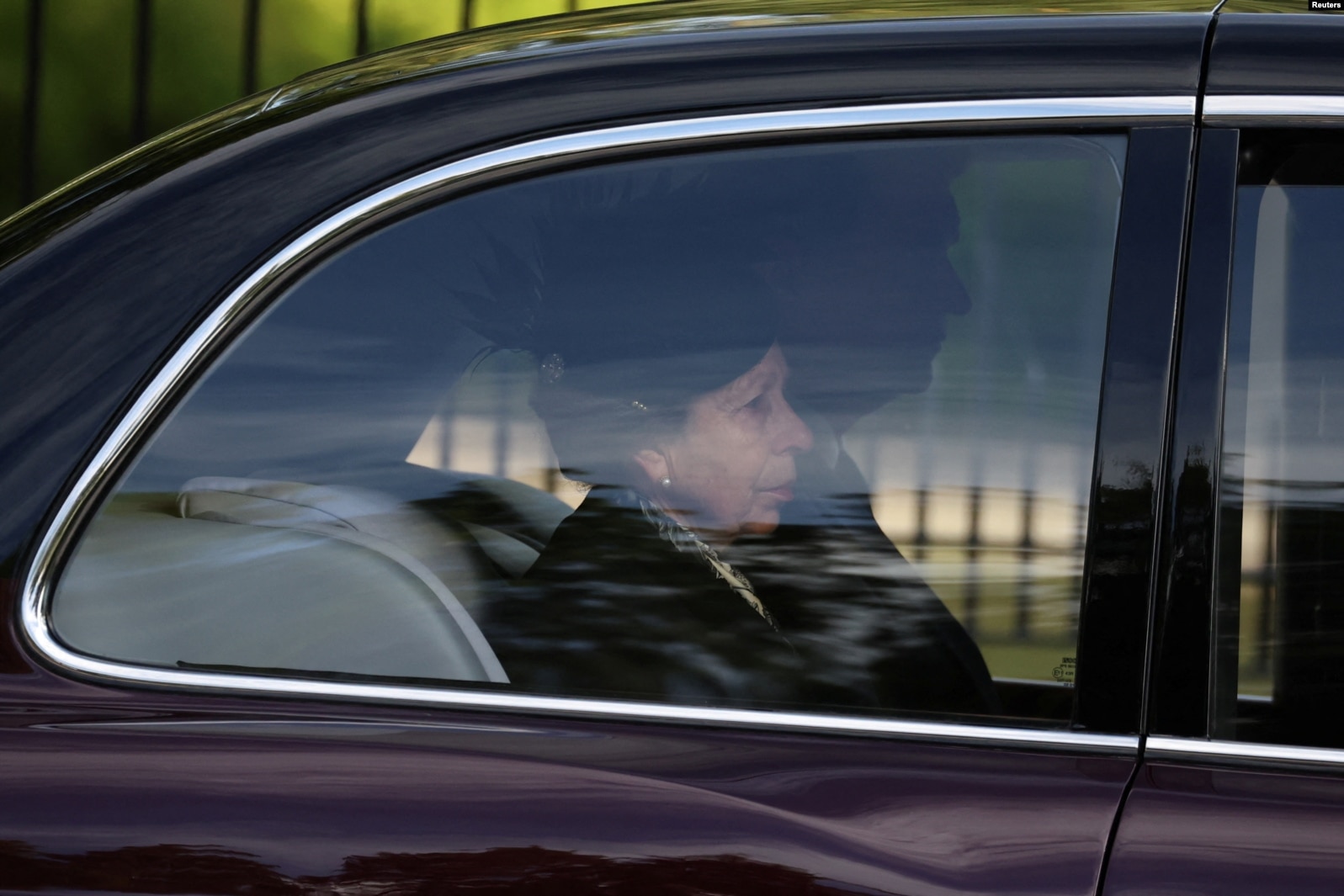
Emotional farewell
“We’ve known (her) for all our lives. So, it’s been the one constant thing in the whole of our lives – the queen,” said Stephanie Cook, a resident of the village of Ballater, close to Balmoral.
After a six-hour journey, the hearse crossed the River Forth toward the Scottish capital, Edinburgh. Along the Scottish capital’s Royal Mile, thousands waited to see the cortege.
Fiona Moffat traveled from Glasgow to witness the moment. She fought back tears as she described her emotions.
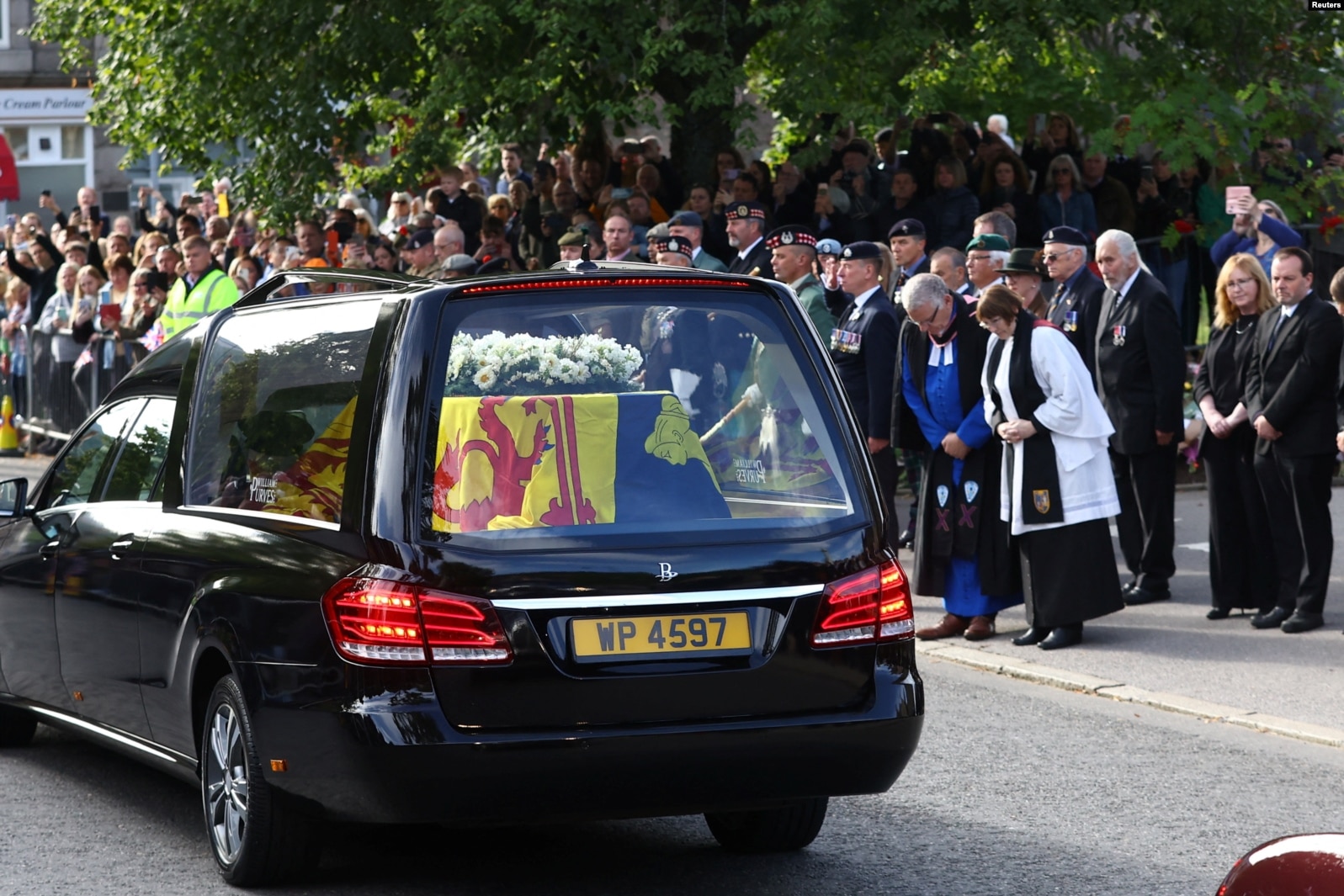
“A very historic moment. I am quite speechless actually. She was a lovely lady. Great mother, grandmother. She did well. I am very proud of her,” Moffat told The Associated Press.
Elaine Robertson, visiting Edinburgh from her home in Ayr on Scotland’s west coast, was also in tears. “I think it is just important to be here. Just important to say goodbye. She has been on the throne for a long time. So, yes, it means a lot,” Robertson said.
Lie in state
The coffin will lie in Edinburgh’s St. Giles Cathedral, where members of the public will be invited to pay their respects.
On Tuesday, the queen’s body will be flown to London. It will first be taken to Buckingham Palace, and then transferred in a public procession led by Elizabeth’s son, King Charles III, to the 11th-century Westminster Hall, where she will lie in state for four days. The hall will be open 23 hours a day for visitors. It will be guarded by soldiers from the royal household.

Tens of thousands of people are expected to travel to Westminster to pay their respects.
“She has been an exemplary head of state in terms of her devotion to her people and to her job,” said royal historian and author Robert Lacey. “And then I think the other thing to take away, which is inevitable in all these crowds and expressions of emotion, it’s the enduring command that the British monarchy holds over the emotions of people in Britain,” Lacey told The Associated Press.
The funeral is scheduled for Monday, September 19 at Westminster Abbey. The coffin will then be taken to Windsor for the committal service, where the queen’s husband, Prince Philip, was laid to rest in April 2021.
